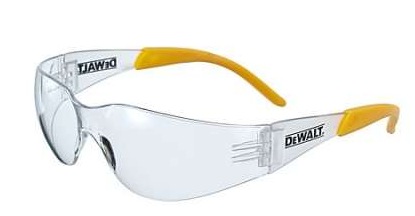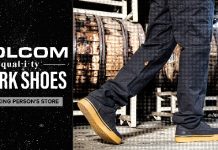If you run a manufacturing plant, construction site or transportation company, you know that implementing a safety clothing program is only half the battle. Your employees have to actually wear the protective items to keep them safe. Unfortunately, the fact is, they too often don’t comply.
In fact, this problem is rampant. An online survey conducted by a Kimberly-Clark Professional found that 89 percent of safety professionals polled had observed WorkingPeople failing to wear the proper workwear and/or personal protective equipment (PPE) when they should have been. Stunning. And almost 30 percent said they observed it on multiple occasions. We need to keep our workforce safe.
But why? Despite seeing coworkers get hurt in preventable accidents, despite continued safety training, reminders, and policies; and despite common sense, workers still choose to put themselves at risk by not wearing the proper personal protective equipment.Why? The Kimberly-Clark survey showed what numerous studies just like it have shown time and time again: The #1 reason workers don’t wear their personal protective equipment (PPE) is because it is uncomfortable. It’s too hot. It fits poorly. It’s unattractive.
So what kind of PPE can be worn? Some examples of PPE are safety glasses, safety gloves, the proper protective footwear and headwear, fire-resistant clothing, high visibility clothing, and accessories along with various tools and equipment, such as lanyards, that can be used to help protect Working People.
It is not uncommon for workers to believe that their personal protective equipment actually makes them more likely to suffer an injury. By restricting their movement, they believe it might make them more likely to get hurt or to make a mistake that could affect their future employment. It may make them too hot and sweaty, putting them at risk for heat stroke or passing out.
This is an alarming issue, but it also solvable. If personal protective equipment is more comfortable, more workers are going to wear it. Employers can take steps to provide more comfortable equipment for their employees. Doing so is not only the right thing to do, it’s the economically sensible thing to do. It’s not complicated: Increased compliance with PPE standards leads to decreases in injuries. Fewer injuries mean fewer workers’ compensation claims. Which means greater cost savings for employers.
One of the best ways employers can solve this problem is by eliminating the pitfalls of a “one-size-fits-all” compliance program. Recognize that different job tasks have different hazardous situations, and thus, need corresponding personal protective equipment. Being flexible and tailoring your employees’ PPE to their specific task not only makes them more appropriately (and thus better) protected, it will also lead to increased compliance with the PPE program.
Proper size and cut are the biggest factors when it comes to comfort. Having a number of options available to your employees will ensure that they are wearing PPE that fits them properly, does not restrict or bungle movement, and is comfortable. It’s also important to have both men’s and women’s versions. Obviously, the body type is different, so having the right version is critical to comfort, and thus, compliance.
In the past, comfort and fit have not been the biggest priorities of the PPE manufacturing industry. But that has all changed. Now, it is reasonable to expect that a highly-protective piece of clothing will be comfortable to wear. It’s also reasonable to expect that a comfortable piece of PPE will also be highly-protective. As technology has advanced, manufacturers have been able to design personal protective equipment that is lighter in weight, more breathable and less abrasive than its ancestors, while still passing the standards necessary, and in many cases exceeding standards.
Unless your employees actually wear their personal protective equipment, your safety program is essentially useless. But these are a number of effective strategies employers can use to increase compliance (and therefore safety) in their companies. An employee who wears his or her PPE because it is more comfortable than what has been issued to them in the past will be a safer, more productive employee. And your business will be better for it.
Help your employees and business thrive by visiting WorkingPerson.com where you can find a wide selection of pre-approved PPE with various sizes and safety features.




